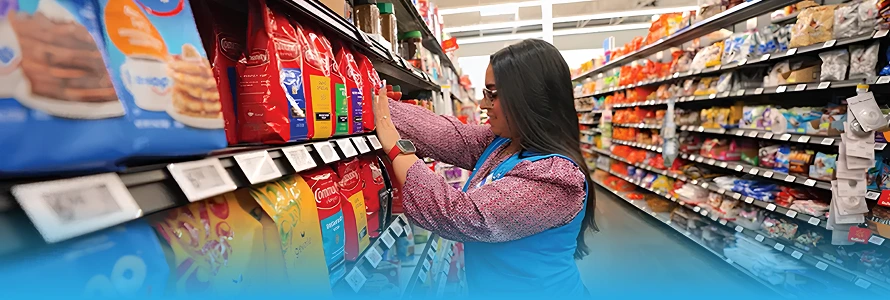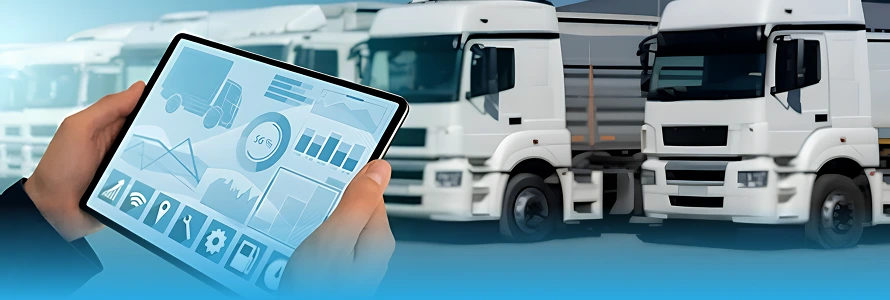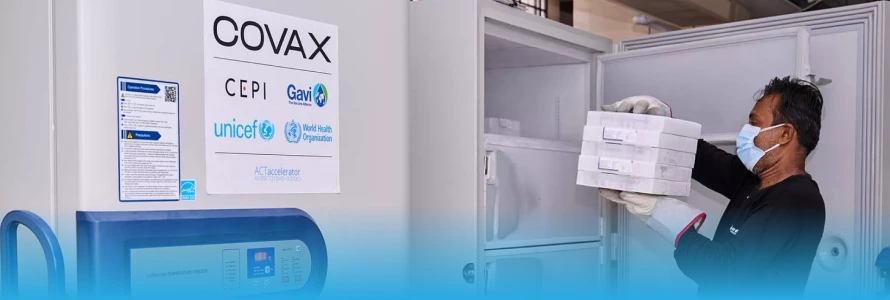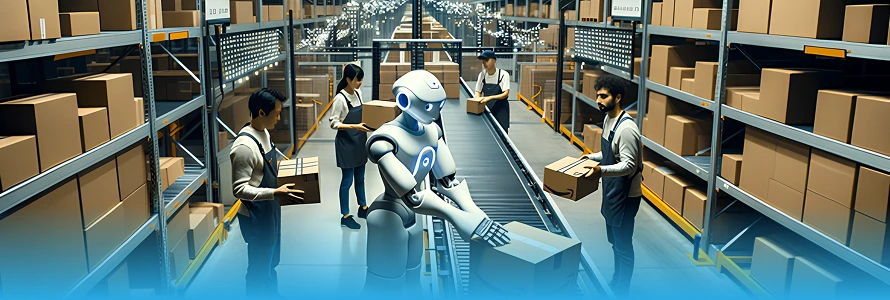
Smart Logistics: How IoT and AI Are Transforming Supply Chains
Introduction
The logistics industry has always been at the heart of global trade. As businesses expand, the need for faster, reliable, and transparent supply chains grows stronger. In 2025, technologies like the Internet of Things (IoT) and Artificial Intelligence (AI) are changing how goods are stored, tracked, and delivered.
Smart logistics uses connected devices and intelligent systems to give businesses realtime visibility and smarter decision-making. Companies are no longer relying only on manual processes. Instead, they are combining data, sensors, and predictive tools to create supply chains that are more responsive and connected.
In this article, we will explore how IoT and AI are transforming logistics, what benefits they bring, real-world examples, challenges businesses face, and what the future of supply chains may look like.
The Role of IoT in Modern Supply Chains
The Internet of Things (IoT) is changing supply chains by connecting physical devices like sensors, GPS trackers, and RFID tags to the internet. These devices collect and share data in real time, giving businesses a clear view of their operations at every stage. With IoT, supply chains can react faster, avoid mistakes, and run more smoothly.
 Inventory Monitoring
Inventory Monitoring
IoT sensors keep track of stock levels in warehouses and stores. They send alerts when products are running low, so managers can reorder on time. This prevents empty shelves and stops extra items from sitting in storage for too long. For example, smart shelves can automatically update inventory records whenever a product is added or removed. According to a report by Mordor Intelligence, the IoT powered logistics market size stood at USD 59.32 billion in 2025 and is expected to reach USD 102.42 billion by 2030, growing at a compound annual growth rate (CAGR) of 11.54%.
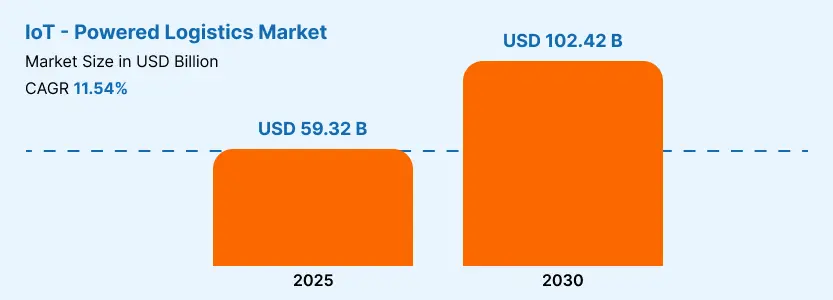
 Warehouse Management
Warehouse Management
IoT technology helps workers in warehouses reduce mistakes and work faster. Smart shelves, automated picking systems, and connected machines can detect when items are placed in the wrong spot and alert staff. Machines can also share data about their performance so problems can be fixed quickly. This makes orders move faster and reduces wasted effort.
 Fleet Tracking
Fleet Tracking
Trucks and delivery vehicles with IoT devices can show their location and performance in real time. Managers can see where each vehicle is and plan deliveries better. Telemetry data also tracks how drivers behave, like speed and braking, which can help prevent accidents and keep vehicles in good shape.
 Condition Monitoring
Condition Monitoring
Some goods like food, medicine, and fragile items need careful handling. IoT sensors track temperature, humidity, and movement during storage and transport. Alerts are sent if conditions go outside safe limits, so staff can act quickly. For example, if a refrigerated truck carrying vaccines gets too warm, managers can take steps to protect the cargo. This keeps products in good condition and follows safety rules.
The Role of AI in Logistics Operations
Artificial Intelligence (AI) adds a layer of intelligence to the data collected by IoT devices. While IoT gives real-time information, AI helps businesses understand that data, find patterns, and make smarter decisions. With AI, companies can predict problems before they happen, plan operations in advance, and save time.
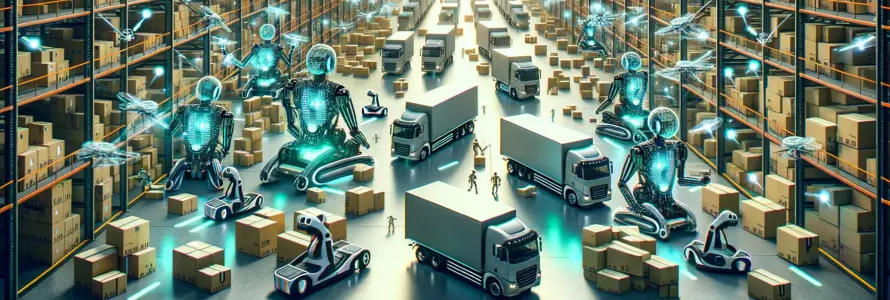
 Demand Forecasting
Demand Forecasting
AI studies past sales, customer behavior, and market trends to predict future demand. This helps businesses stock the right amount of products and avoid both shortages and extra stock. For example, AI can show when certain products are likely to sell more, like winter clothing during cold months or soft drinks during summer. McKinsey reports that AI-driven forecasting can reduce errors in supply chain networks by up to 50%.
 Risk Management
Risk Management
Supply chains face many risks like supplier delays, worker strikes, or natural disasters. AI can study patterns and give early alerts when it detects possible disruptions. For example, if a supplier is struggling to meet deadlines, AI can suggest alternative suppliers before the problem affects production. This allows businesses to act quickly and keep operations running.
 Automation
Automation
AI makes routine tasks easier by handling them automatically. Chatbots can answer customer questions, share order updates, and process returns without human help. AIpowered software can also take care of paperwork, such as shipping labels and invoices. This reduces waiting time for customers and frees up staff for more important tasks.
 Route Planning
Route Planning
AI looks at traffic conditions, weather reports, and delivery patterns to suggest the best routes for trucks and delivery vans. This helps deliveries reach customers faster while using less fuel. For example, if a major road is blocked due to an accident, AI can quickly suggest another route to keep deliveries on track.
Real-World Statistics You Should Know
Smart logistics powered by IoT and AI is not just a trend. Data shows how much impact these technologies are already creating and how much more they can do in the future.
IoT Value in Logistics
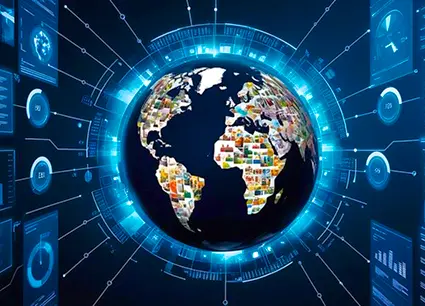
According to FreightWaves, IoT could add up to €1.77 trillion (about US$1.89 trillion) in extra value for logistics worldwide by 2025. This includes savings from fewer delays, better use of vehicles, and improved warehouse operations. It also includes the new revenue companies can earn by offering smarter, faster, and more reliable services.
AI in Decision-Making
According to SDCExec, by 2030, half of all cross-functional supply chain tools will use AI agents to make decisions on their own. This means AI will not just give suggestions but will also take actions such as rerouting trucks, adjusting inventory, or alerting managers in real time. Businesses that adopt AI early will have a big advantage in reacting quickly to changes.

AI in Transport Cost Savings

According to Use AI for Business, AI-powered route planning can cut transport costs by 10–15 percent. By analyzing traffic, weather, and delivery patterns, AI helps companies choose the fastest and least expensive routes, saving both time and money.
Key Benefits of Smart Logistics
Using IoT and AI in logistics brings many benefits for businesses and their customers. These technologies help companies work smarter, cut costs, and build stronger relationships with buyers.

Real-World Applications of IoT and AI in Logistics
Smart logistics is no longer just an idea. Many industries are already using IoT and AI to solve everyday problems in their supply chains. These technologies are helping companies save time, cut costs, and serve customers better.
Challenges and Potential Solutions in Adopting Smart Logistics
While IoT and AI bring many opportunities for supply chains, businesses also face challenges when adopting these technologies. The good news is that with the right approach, most challenges can be solved.
| Challenge | Potential Solution |
|---|---|
| High Setup Cost | Start with pilot projects in one area (like fleet tracking) and expand later. Use cloud-based tools or leasing options to lower upfront costs. |
| Data Privacy | Apply strong encryption, secure networks, and regular audits. Train staff on safe data practices and work with trusted providers. |
| Skill Gap | Train existing staff and hire new talent where needed. Consider managed services where outside experts handle setup and support. |
| Integration Issues | Integrate step by step instead of all at once. Use custom solutions to connect old systems with new IoT and AI tools to avoid disruptions. |
Conclusion
The rise of IoT and AI is reshaping supply chains in powerful ways. Businesses now have tools to track goods in real time, predict demand, reduce waste, and improve customer trust. While challenges like high setup costs, data security, and the need for skilled staff exist, many of these can be managed with careful planning, step-by-step adoption, and proper training. Taking small, focused steps makes it easier to overcome obstacles and see real benefits.
As global trade continues to grow, companies that adopt these technologies and plan smartly for potential challenges will be better prepared for changing customer expectations and market conditions. Smart logistics is no longer just an option; it’s becoming the foundation for modern supply chains.
At Brevity Technology Solutions, we help businesses build custom technology solutions that make supply chains smarter, safer, and more connected. If you’re curious about how IoT, AI, or other smart logistics tools can address your challenges and improve your operations, Book a free consultation call with us. We’d be happy to discuss your needs and explore the right solutions for your business!
Related Post
-
F
-
A
-
Q
Smart logistics uses technologies like IoT and AI to make supply chains more connected, visible, and able to predict problems before they happen. It helps businesses track goods, plan better, and respond quickly to changes.
IoT devices track inventory, monitor delivery vehicles, check product conditions, and provide real-time updates. For example, sensors can alert managers if temperature sensitive goods like vaccines are at risk, helping prevent spoilage.
Yes. Small businesses can start with affordable IoT sensors or AI software to improve inventory tracking, delivery planning, and demand forecasting. Starting small with pilot projects makes adoption easier and less expensive.
Retail, e-commerce, healthcare, food, manufacturing, and transportation all gain major advantages. Any industry that moves goods, manages inventory, or delivers products to customers can benefit from IoT and AI tools.
Challenges like high costs, data security, and skill gaps can be handled by starting small, training staff, securing networks, and integrating new tools step by step. This makes the adoption process smoother.
Benefits include lower costs, better visibility of supply chains, faster deliveries, higher customer satisfaction, and less waste. IoT and AI together help businesses make smarter, faster decisions.
Yes. Optimized routes, better inventory management, and reduced waste! All of these decrease fuel usage and carbon footprints. Businesses can save money while running greener operations.
Many IoT and AI tools can connect with existing systems, though some updates or custom connections may be needed. Integrating in stages helps avoid disruptions.
Some improvements, like real-time tracking and inventory alerts, can show immediate benefits. Bigger results, like cost savings and AI-driven route optimization, often appear after a few months of implementation.
Start by identifying key areas where technology can make a difference, like warehouse monitoring or delivery tracking. Then choose IoT or AI tools that fit your business size and budget. If you need assistance, you can book a consultation call with us, as we have expertise in the logistics domain, we can help plan and implement the right solutions.
Want to Scale
Your Business? Let’s Meet & Discuss!

CANADA
30 Eglinton Ave W Mississauga, Ontario L5R 3E7

INDIA
3rd floor Purusharth Plaza, Amin Marg, Rajkot, Gujarat. 360002
Get a Quote Now
Let's delve into a thorough understanding of your challenges and explore potential solutions together
